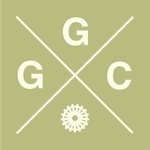Multimodal Safety by Design: Guest Article by Jayce Keller
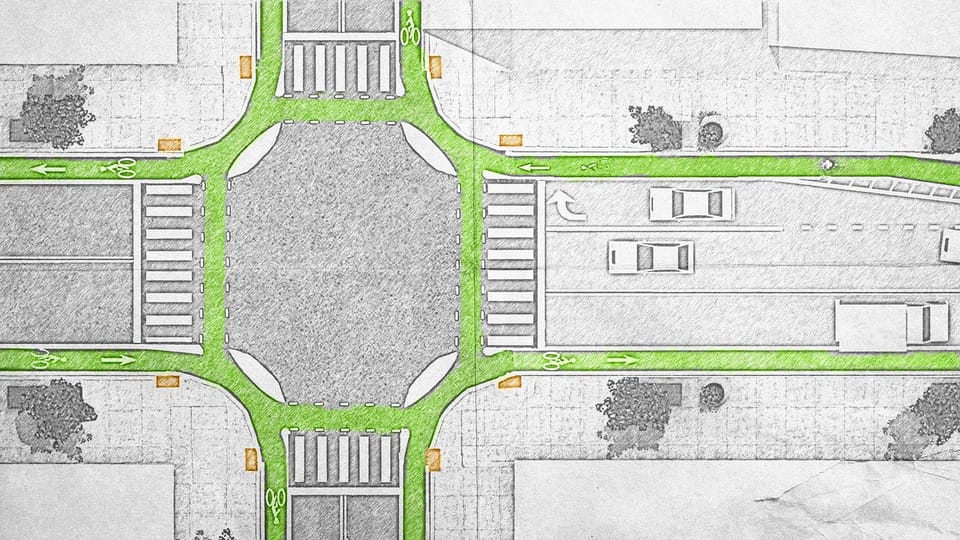
There is much to learn from the Dutch when it comes to street design and infrastructure; particularly in how they calm traffic and create safer intersections for everyone. In North American cities like Raleigh, efforts have been made toward more inclusive roadways through the concept of Complete Streets, a design approach that aims to support all modes of transportation, from cars to bicycles to pedestrians.
A typical four-way intersection in Raleigh that meets this standard often would feature two-way vehicle lanes, adjacent one-way bike lanes, and wide sidewalks. On the surface, this layout appears balanced. However, the balance of bike lanes and sidewalks come to an abrupt end at the intersection, causing an imbalance of priority in favor of the car.
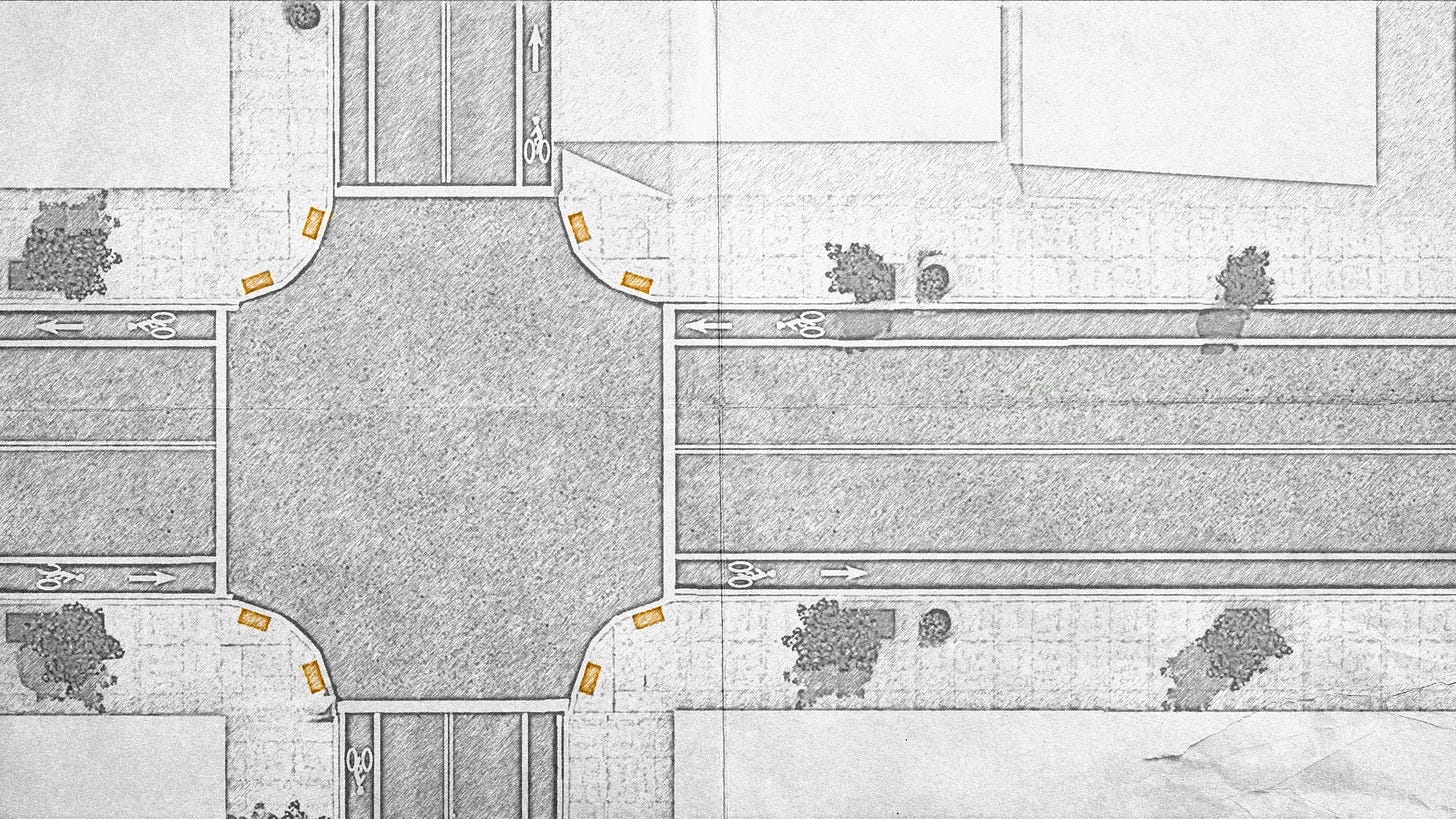
A common variation includes the addition of a right-turn lane that cuts through the bike lane, placing cyclists in between moving lanes of traffic. This design creates a dangerous conflict point. Drivers turning right must cross the path of cyclists while checking over their right shoulder at an awkward angle, often while also trying to merge or beat oncoming traffic. Expecting drivers to manage this complex task reliably, every time, in live traffic conditions, is unrealistic and unsafe.
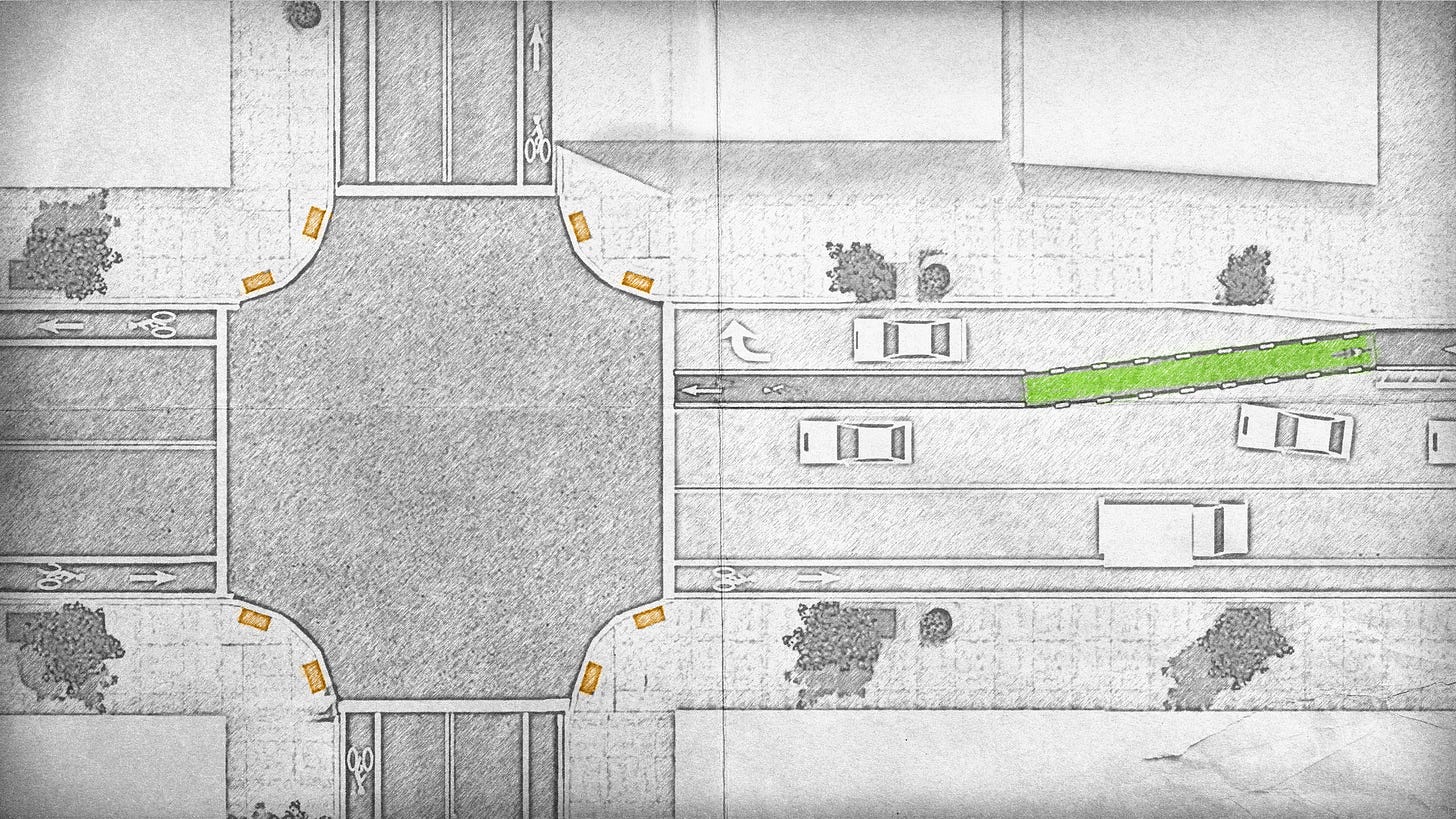
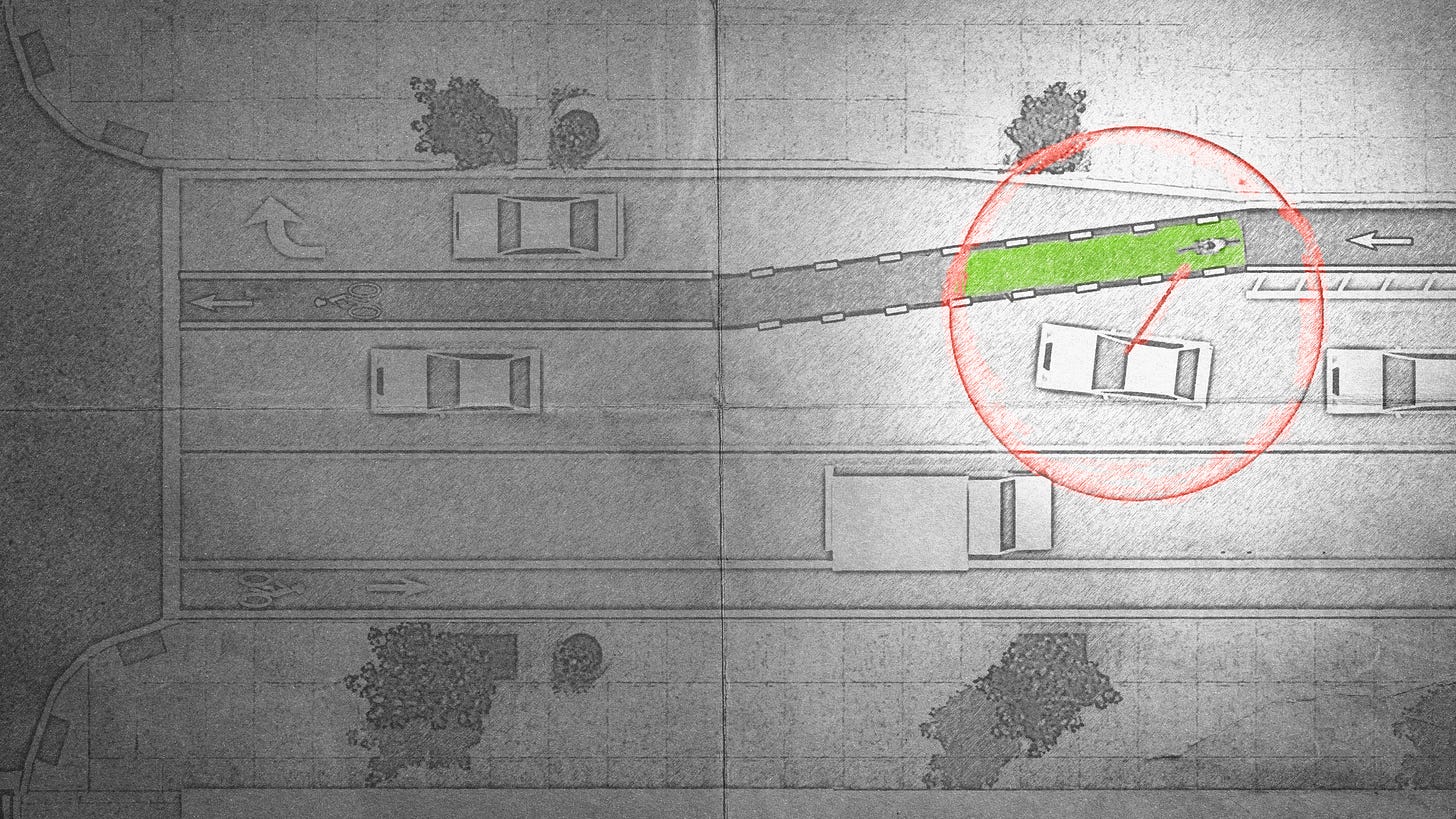
This kind of intersection can be observed at Wilmington and Peace. It serves as a clear example of a well intention design that still puts vulnerable road users at risk.
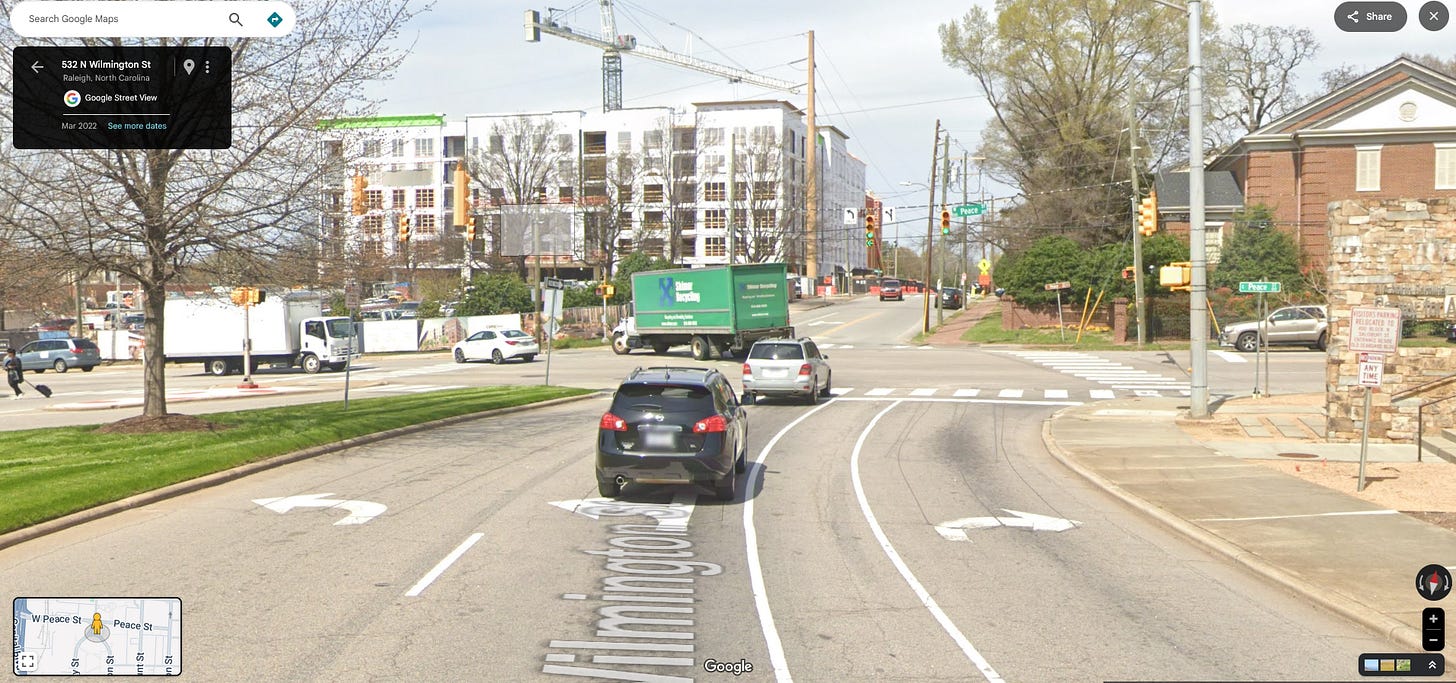
The Dutch have addressed the dangers of this intersection design by maintaining cyclist positioning to the right of traffic and maximizing separation between all forms of transportation. Their intersection models ensures that bike lanes stay connected across all four legs of the junction, while also physically and visually separating them from vehicle movements.
Extending and connecting the bike lanes allows the use of a corner island that serves both as a protective buffer and a design cue that forces turning cars to slow down. This increased turning radius not only provides drivers with better visibility, but also acts as a calming method, slowing down vehicle speeds. In many cases, this design can be implemented within the same footprint as a typical North American intersection, requiring no additional land use.
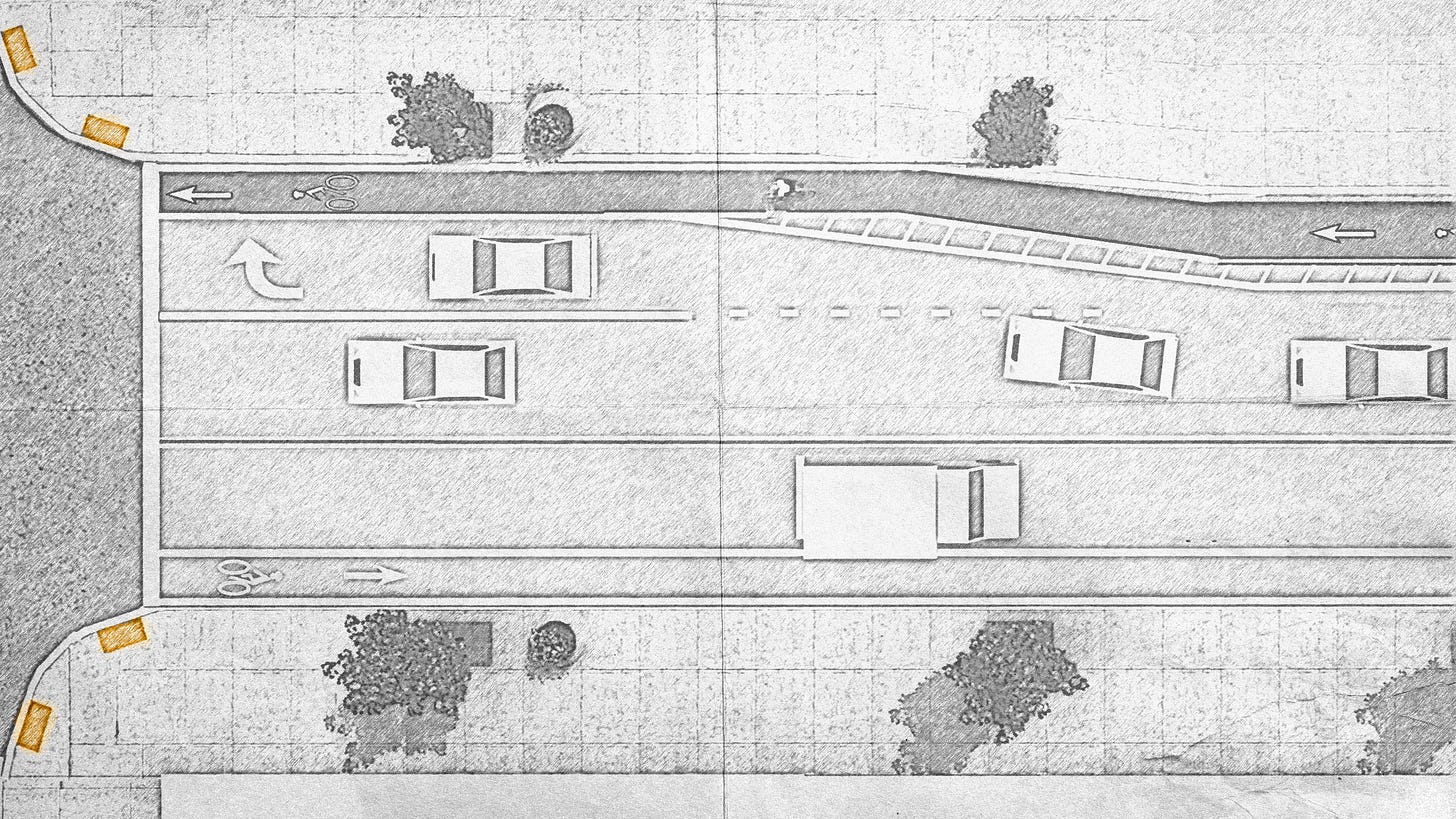
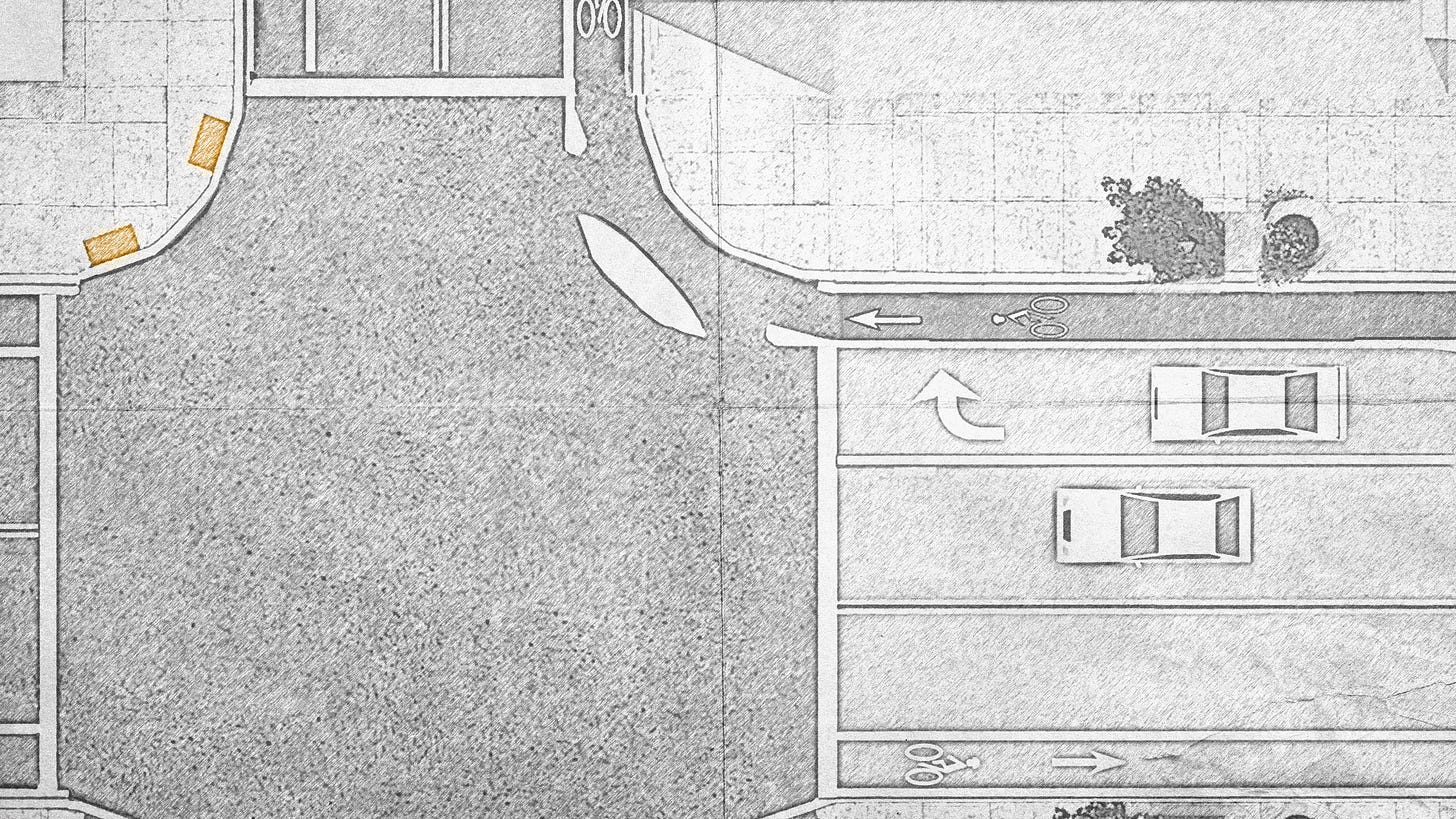
Pulling the vehicle stop line slightly further back, a crosswalk can be fitted creating further separation for every method of travel. And with clear signage, paint markings, and signal phasing, the intersection becomes far easier to navigate - for all users.
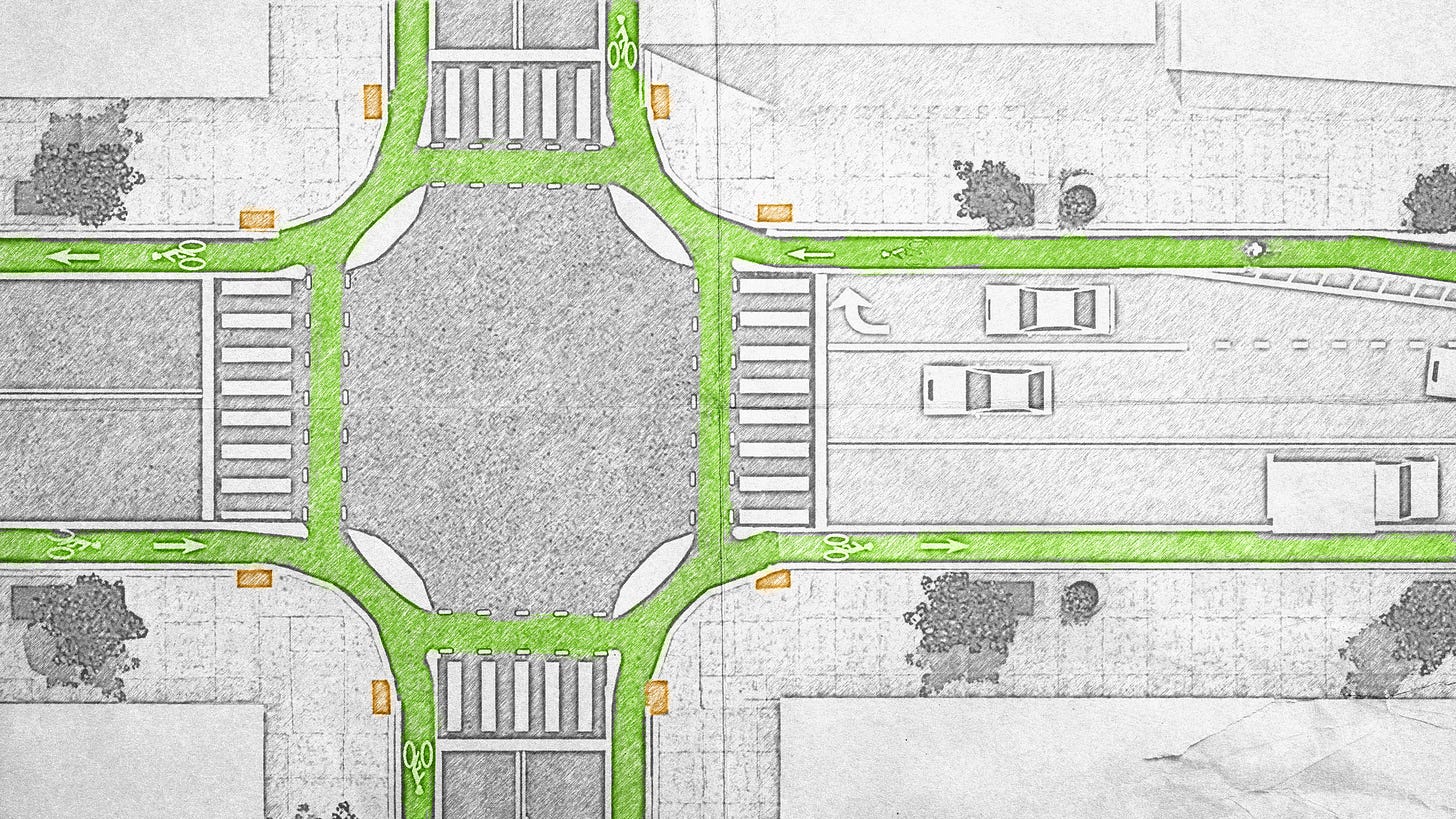
Now the question arises, how does this actually improve safety?

